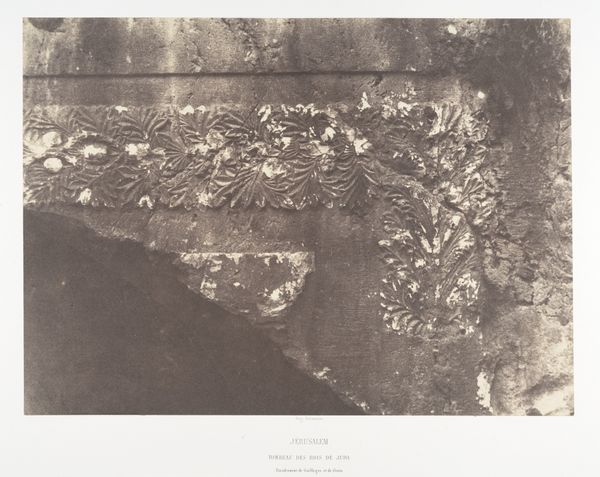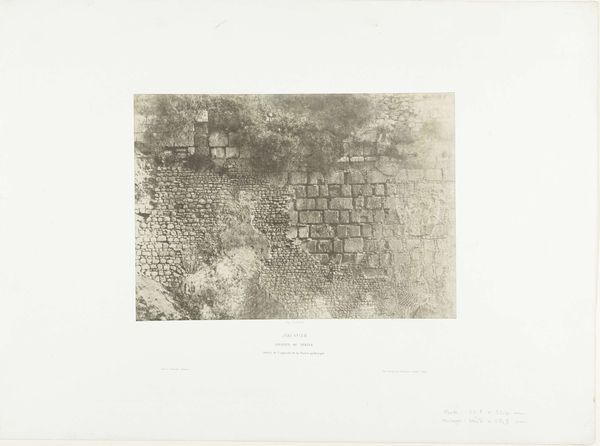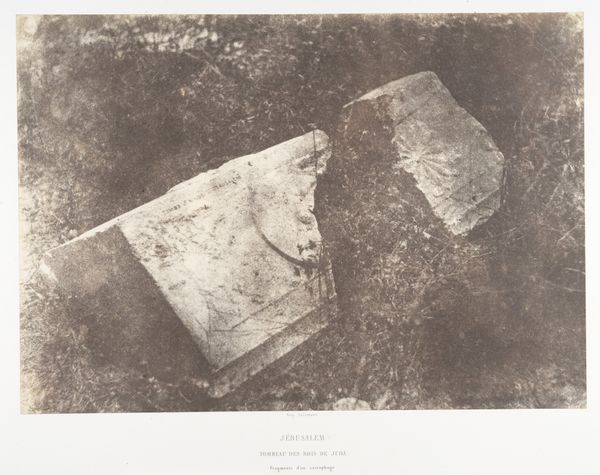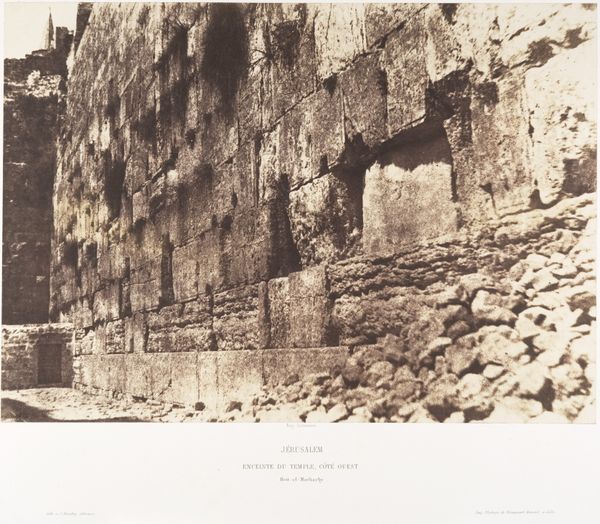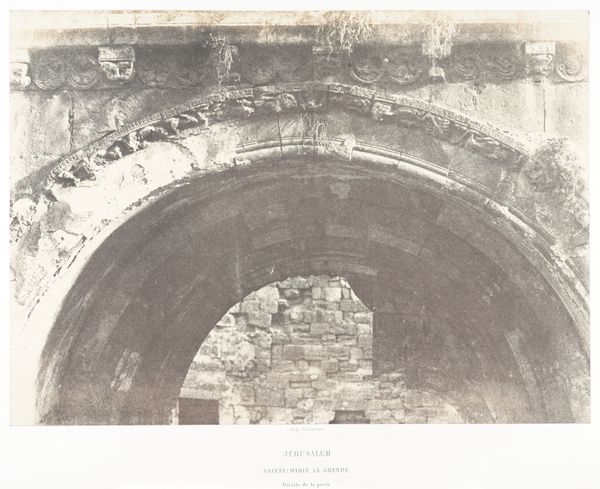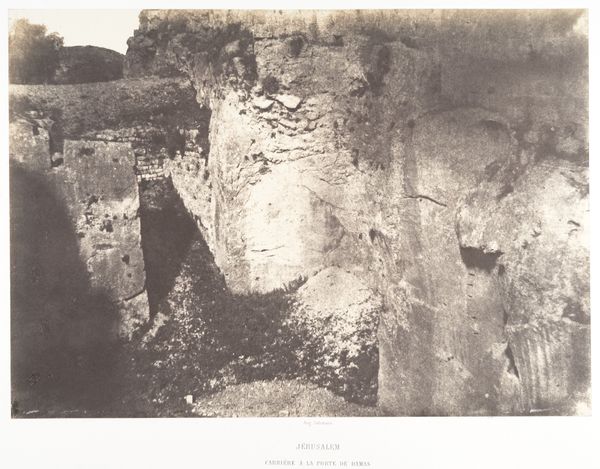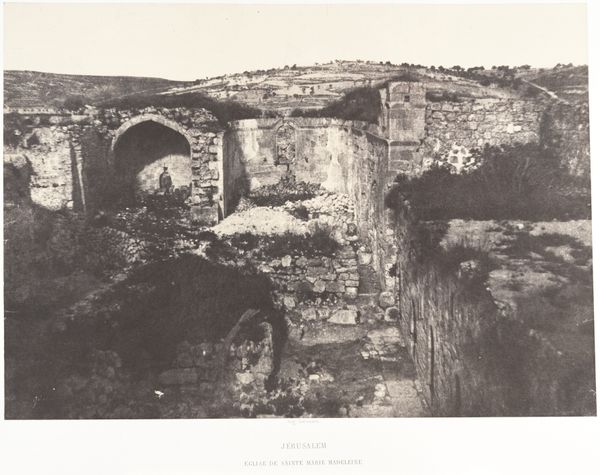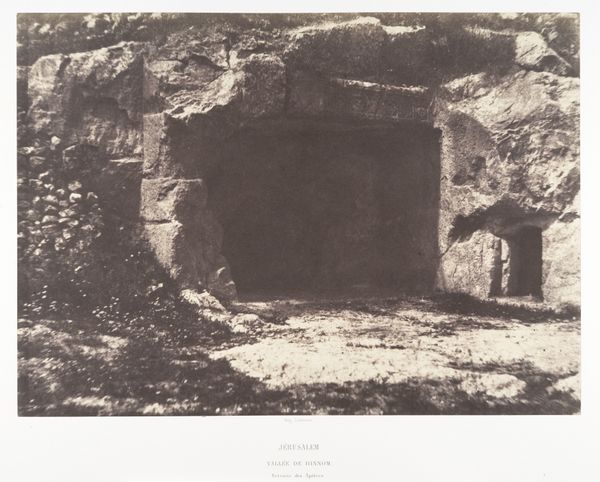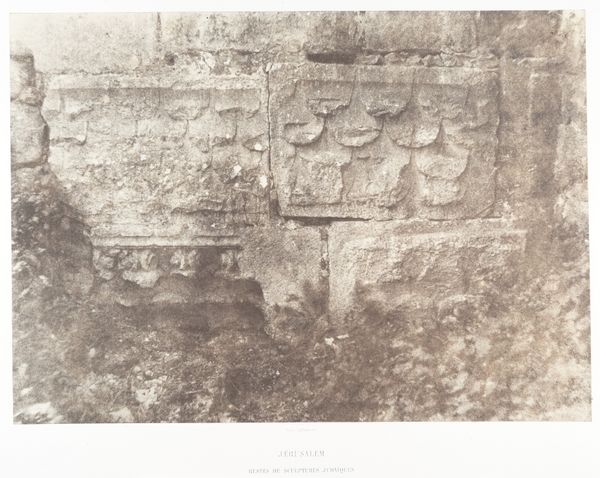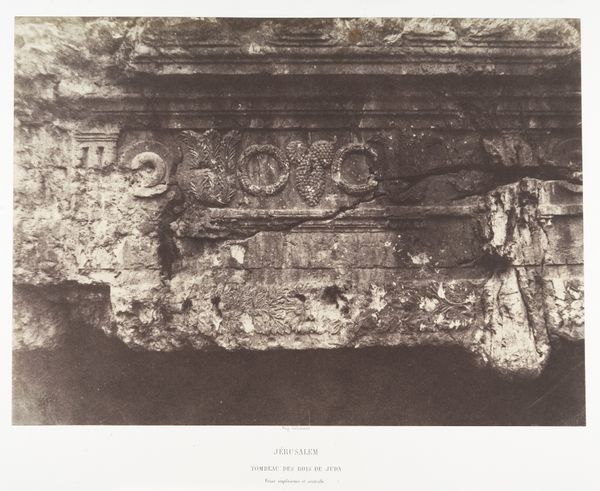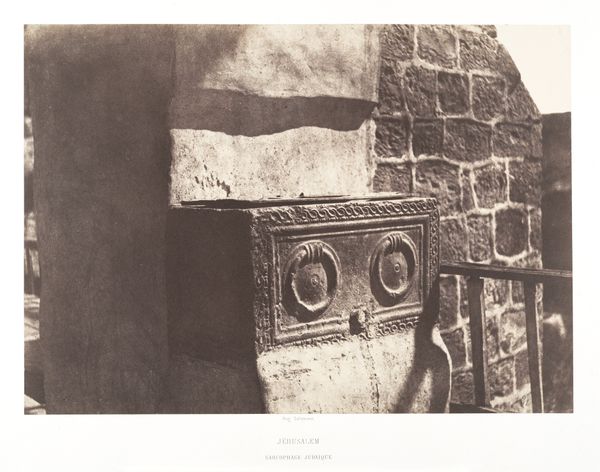
Jérusalem, Enceinte du Temple, Détails de l'appareil de la piscine probatique 1854 - 1859
0:00
0:00
print, photography, architecture
# print
#
landscape
#
photography
#
architecture
Dimensions: Image: 22.8 x 32.5 cm (9 x 12 13/16 in.) Mount: 44.6 x 60.2 cm (17 9/16 x 23 11/16 in.)
Copyright: Public Domain
Curator: What strikes me immediately is the density, the sheer materiality of this wall. The weight of those stones... it feels almost oppressive. Editor: Well, that's quite apt. What you are seeing is a photographic print by Auguste Salzmann, titled "Jerusalem, Enceinte du Temple, Détails de l'appareil de la piscine probatique," created between 1854 and 1859. It depicts a section of the Temple Mount in Jerusalem. Curator: Ah, so that's Jerusalem. Thinking about the stones themselves—where they were quarried, the labor involved in shaping them, the way they’ve been laid and held together…It’s a monument not just to religious history, but also to human effort. I am also drawn to what seems like damage done through erosion. What type of printing technique was employed? Editor: Salzmann used the waxed paper negative process, which gives the print its unique, somewhat soft focus and tonal range. It's crucial to remember that photography at this time was viewed as objective documentation, particularly of culturally and historically significant sites. Curator: "Objective" is doing a lot of work there, though, isn’t it? Whose gaze are we seeing? Salzmann's presence, his choice of this specific angle... it's all part of shaping the narrative. It makes me wonder what else he chose to include or exclude. It becomes part of a European project to interpret and display the Holy Land to audiences back home, framing narratives for how viewers are meant to consider a site fraught with complex historical and sociopolitical concerns. Editor: Indeed. There was immense political context driving the selection and viewing of this place. The mid-19th century was a period of increasing European engagement with the Middle East, both politically and culturally. Photographs like these fueled Orientalist fantasies. Curator: And also informed and shaped geopolitical realities, and even power dynamics, if you think about it. The circulation of images played a crucial role in Western understandings of the East. By circulating these pictures widely, there's this implication of European knowledge, of somehow mastering the terrain of the holy city. How very... heavy. Editor: It is a sobering reflection on the complicated interplay of art, politics, and history, when you consider not just the photograph as an image, but as a product of its time, embedded in its power structures. Curator: Exactly, and the physical endurance and long history encoded into those stone structures continue to speak even today. Editor: An enduring, weighty legacy, indeed.
Comments
No comments
Be the first to comment and join the conversation on the ultimate creative platform.
